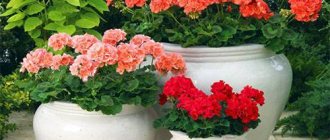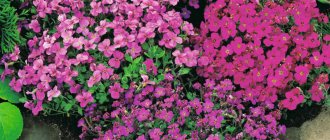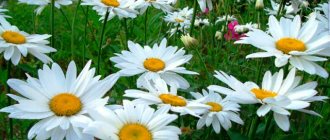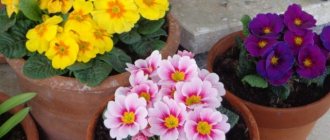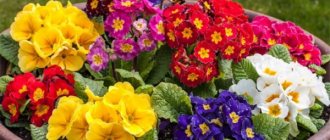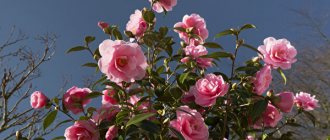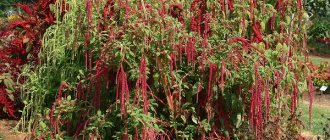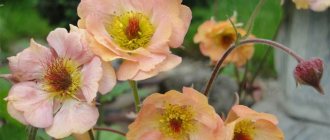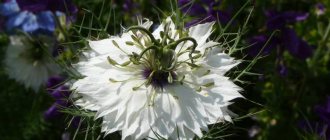This is one of the most popular garden plants with universal uses. Geranium is great as a houseplant and garden plant, even as a ground cover. It looks great in modern gardens. Some species readily grow in the sun, others in the shade. Let's find out how perennial garden geranium is grown - planting and care in open ground, look at photos of species and varieties, find out how to provide the plant so that it decorates the garden all season long.
Characteristics of garden geranium
Garden geranium is a beautiful lush compact bush that is a herbaceous perennial. The height of the plant is varied: there are both low-growing and tall species.
The leaves are dense, carved with lace. There are different sizes and shapes - they have rounded or pointed edges.
The buds of the plant reach up to 5 cm in diameter and consist of approximately 5 petals. The color of geranium flowers has a wide color palette. There are all shades of red, white, pink, and purple. Plants of the geranium family have a pleasant sweet aroma.
The most important advantage of this species is its health: the flower is immune to drought, unpretentious in care and has excellent immunity.
Geranium in a flowerbed
Decorative varieties of geranium are bred from the ancestors of this plant, living in meadows and clearings. The flower has adapted well to the conditions of the wild; it is unpretentious and tenacious. Breeders noticed that the bush has beautiful carved leaves, which themselves can serve as decoration for a flower bed in the garden during the period between flowering, and they created many different varieties of ornamental plants. The color of the inflorescences is very diverse: blood-red, white, lilac - any except yellow and orange. You can plant one branch in your dacha, provide good care, and it will begin to grow and soon turn into a lush openwork island. There is one drawback - brittle stems, but scientists are working on this problem and have already created species whose beauty will not be spoiled by either rain or strong wind.
Why, among the huge number of perennial ornamental plants, do many owners of summer cottages like garden geranium? If you have time, energy and desire, you can plant roses, orchids and even completely exotic flowers that are accustomed to a tropical climate
And a person who comes to the dacha only on weekends and is forced to pay attention to the garden, vegetable garden, and flower garden in 2 days does not have the opportunity to provide complex care for capricious pets. He needs ornamental crops:
- They grew in one place for many years and did not require annual planting.
- They were not afraid of drought and did not require daily watering.
- They tolerated frosty winters well.
- They were not sick and were not attacked by pests.
- Didn't require weeding.
- They bloomed for a long time, but had an attractive appearance even without flowers.
Perennial garden geranium has all these qualities. Simple care, endurance and beauty of the plant attract the sympathy of summer residents.
There are many varieties of ornamental bushes. By combining different varieties, you can create an interesting composition covered with colorful bunches all summer long. While the plants are still young and the leaves do not cover the entire area, annual pelargonium will help fill the empty soil. They require approximately the same care, and in appearance, pelargonium is not very different from geranium and will not disrupt the style of the flower garden.
The difference between garden geranium and indoor geranium
The indoor geranium or pelargonium was grouped with the geranium in 1738, despite the fact that they are genetically different. Outwardly they are very similar, but have many differences. For example, plants belong to the same family, but they cannot interbreed.
The table discusses other distinctive features.
| Sign | Sadovaya | Room |
| Habitat | Temperate climate zone - Mediterranean region, Belarus, Central Asia, regions of the mountainous Caucasus, Siberia and the Far East. | Mainly South Africa. |
| Sensitivity to weather | Feels great in open ground all year round and is very frost-resistant. | Heat-loving, wintering exclusively indoors. It can only be in the open ground during the summer season. |
| Seeds | "Geranius" comes from the Greek word for "crane". It’s not without reason that the seeds resemble the head of this bird in appearance. | "Pelargonium" means "stork". Similarly. |
| Flowers | They consist of 5-8 petals of the correct shape, they, in turn, form inflorescences, in which there are about 5 such flowers. | Petals of various irregular shapes form flowers of multiple inflorescences. |
| Stamens | To 10. | Until 7. |
| Color | There are no red shades in nature. | Blue ones are not found. |
Features of cultivation
By and large, geranium is a fairly unpretentious plant and does not require any special care. This is a perennial plant that tolerates winter cold well and does not require digging in the fall.
However, there are several nuances, failure to comply with which can lead to disastrous results.
The first rule that must be followed is the choice of location. Sunny or partial shade is best. Some species, for example, forest geranium, red-brown, Roberta and all varieties related to them, feel great in fairly shady places. Therefore, they are perfect for landscaping shady areas.
Light, loose soil is required. The root system of geranium is quite superficial and does not have a very long rhizome, so the distance between the bushes must be large. When planting, the soil must be dug up to the depth of a shovel, humus or special soil mixtures for geraniums must be added.
Another feature is the ability to “spread” across the territory - geranium is an excellent ground cover plant. And for this feature or characteristic (as you like to call it), it is highly valued by gardeners. This is especially true for Cantabrian geranium, large-rhizome, Wallich.
Some species grow well under trees. It is used to fill voids in flower arrangements, flower beds and other landscape structures.
Types and varieties of geraniums
Recently, the popularity of using the plant in landscape design has been increasing due to its interesting appearance and properties, such as frost resistance and unpretentiousness.
There are about 400 varieties of geranium. There is a conditional division according to the height of the bush: low ones up to 50 cm, high ones - over 50 cm. Generally speaking, on the territory of Russia 4 large species can be distinguished:
- large-rhizome crane grass;
- dark brown cranebird;
- southern European cranebird;
- fur-flowered geranium.
| View | Description | Varieties and hybrids |
| Bolotnaya | A perennial with branched short roots. The height of the bush is about 30-70 cm. The buds are 4 cm in girth, 2-3 per inflorescence, mostly lilac in color. Flowering is observed in the first two summer months. It prefers humidity, so it grows in areas with swamps, meadows and forests. Habitat: European Russia, Belarus, Ukraine. The plant is valued for its healing qualities: help with colic, ear diseases, gout, diseases of the genitourinary system, rheumatism; normalization of heart rate. | – |
| Gorgeous | A very beautiful spreading shrub about 60 cm. Blue flowers form inflorescences of 2-3 flowers. Flowering can be observed throughout the summer months. The most interesting thing about this species is the leaves. They have a fluffy dissected shape and have an interesting feature - in the fall they turn from green to red. | Alan Mayes, Blue Blood, Mrs. Kendall Clark, Rosemoor. |
| Georgian | An unpretentious bush that grows up to 80 cm in height. You can find the plant in nature in the meadows of the Caucasus. The roots are remarkable - they contain natural black coloring pigments. Volumetric buds of a purple hue with dark inclusions. The flowering period is from July to September. The foliage is fluffy with a very interesting polygonal sharp green-grayish shape. | – |
| Red-brown | Carpathian bush up to 80 cm in height with large basal leaves. They have an interesting shape and pattern: dark purple stripes appear on a grayish tint towards the end of summer. The plant has small purple flowers, the petals of which have wavy edges, bloom in July-August. | Langthorn's Blue, Lily Lovell, Samobor, Album. |
| Blood red | A hemispherical shrub with a height of about 60 cm. Its distinctive feature is its large single flowers, fuchsia or purple color. Blooms all summer. The leaves of the plant will change color to red in autumn. This type of geranium has healing properties and is used for: viruses, fungi, infections, germs and bleeding. Tinctures are often used | Alan Bloom, Apfelbute, Ankum's Pride, Canon Miles, Elke, Nana, Prostratum. |
| Lesnaya | Shrub 80 cm tall with purple flowers. Flowering is very short, only 3 weeks starting in May or June. It grows in the wild in Western Siberia, Central Asia, and Europe. | Mayflower, Album, Birch Lilac. |
| Lugovaya | The plant develops only in well-lit areas of Eurasia. It has large flowers of various colors: from red to blue, from blue to purple. Monthly flowering begins in June. It has a green coloring pigment. It is used in medicine as a sedative, antimicrobial and anti-inflammatory agent. | Algera Double, Cluden Sapphire, Ilja, Splish Splash. Jonson's Blue, Brookside, Kashmir Blue, Orion. |
| Small-stamen or Armenian | Perennial, reaching 1.2 m with long leaves. Their color changes depending on the season: in the summer they will turn green, in the spring they will turn crimson, and in the fall they will turn red. The plant blooms in June, the flowers are small and fuchsia in color. | Bressingham Flair, Ann Folkard. |
| Flat petal | A spherical perennial shrub, up to half a meter tall and up to 1 m in girth. It has pubescent green leaves and purple flowers. | – |
| Endressa or Perenean | Due to its geographical growth, it is a bush with long roots, spreading, half a meter high. Large green leaves about 10 cm long and small pink flowers. Loves well-drained soil and partial shade. | Beholder's Eye, Wargrave Pink, Betty Catchpole. |
| Himalayan | It has developed roots, the height of the bush is no more than 60 cm. The leaves are dissected in shape with large buds with a girth of up to 5 cm. They are painted in colors from blue to purple, with red veins. Flowering from late spring until early autumn. Loves loose and well-drained soil. It can be found in the territories of Afghanistan, Tibet, Tajikistan and Himalayan meadows. | Baby blue, Gravetye, Irish Blue, Plenum and hybrids Johnson's Blue and Rozanne. |
| Dalmatian | A low bush up to 15 cm high and 50 cm wide with small flowers of pale pink color. Blooms in summer. The leaves are dissected and become red when the temperature drops greatly. Grows in Montenegro and Albania. | – |
| Ashy | Small bush with bright pink flowers. Flowering lasts only 20-40 days from the first month of spring. The leaves are grayish-greenish in color, have a dissected shape, about 5 cm in length. They live in Albanian and Balkan meadows. | Ballerina, Splendens, Subcaulescens. |
| Renard | A perennial plant with a thick rhizome, about 30 cm tall. It has pimply olive-colored leaves and white flowers with purple gaps. The homeland of this geranium is the Caucasus. | – |
| Roberta | Half a meter tall plant. The foliage is similar to fern leaves and may change color to orange in the fall. The flowers are small, light pink. The stem is covered with small reddish hairs. The species is notable for the fact that it grows quietly in high mountain areas and prefers shade. Grows in the forests of Eurasia and North America. | – |
| Wallich | The low ground cover grows up to 30 m in height and up to half a meter in width. It has long leaves and large purple flowers with a white center. Flowering period from mid-summer to mid-autumn. Found in northeast Afghanistan and Kashmir. | Buxton's Variety, Buxton's Blue, Syabru, Crystal Lake. |
| Large rhizomatous or Balkan | A spherical, low-growing shrub with branched roots. The variety is tolerant to lighting. The leaves are round in shape and divided into parts. The rich green color turns red in autumn. The flowers come in bright colors: pink, purple. The plant has a pleasant smell. Habitat: Alps and Balkans. Its roots can be used as a natural flavoring in cooking. Geranium oil has wound healing and soothing properties. | Bevan's Variety, Czakor, Lohfelden, Ingwersen's Variety, Inversen, Spessart, Variegata. |
| Cantabrian | A hybrid obtained from crossing Dalmatian and large-rhizome geraniums. The miniature perennial has glossy leaves and small flowers in white, pink and purple. | Westray, St. Ole, Biokovo, Cambridge. |
How to care?
Humidity
Geranium does not have any special requirements for humidity, but it loves fresh air. The culture tolerates humid and dry atmospheres.
Note! You should not spray it, otherwise it will lead to burns.
Temperature
It is necessary to grow geraniums outdoors at an air temperature of at least 12 degrees. If this indicator decreases, the leaves will begin to fall off and droop.
Watering
It is necessary to moisten the plant regularly, but avoid standing water, as this can lead to the development of root rot. But drought is also undesirable, otherwise the flower will not bloom or its inflorescences will become smaller and the leaves will begin to fade. But after watering, all elements of the plant will be restored.
It is best to moisten the soil after the top layer has dried. Excessive soil irrigation causes the cessation of flowering.
Feeding
Geranium does not need abundant nutrition. It is quite enough to use compost and peat that were added to the hole before planting. An excess of fertilizers will have a detrimental effect on the formation of flowers.
Before flowering, you need to apply fertilizer containing phosphorus. Potassium compounds should be used once every 2 weeks during the formation of inflorescences and during active flowering, as they will provide large lush inflorescences.
Trimming
With the onset of autumn, you can move on to forming the geranium crown. Then it will be thicker and begin to bloom profusely. During pruning, it is necessary to leave the stem with 6-7 leaves.
Recommendation. You need to remove shoots that grow not from the roots, but from the leaf axils.
If the bush has grown greatly for the winter, then at the end of February or at the beginning of March it can be pruned again. Cut shoots are perfect for cuttings.
Subsequently, to improve flowering and create a beautiful crown shape, cut off geranium shoots when 4-5 leaves appear. But only from December to January it is better not to touch the plant, as it enters a dormant period. There are many benefits to pruning geraniums:
- the bush turns out to be dense, as a result of which it acquires a compact and decorative appearance;
- pruning helps protect young leaves and shoots from diseases, since dried flowers and leaves are often affected by gray rot.
We have prepared a lot of useful tips about geraniums: pinching, ideal soil for an indoor flower and pot, feeding with iodine, planting geraniums.
How to care for your garden in summer?
Summer care for geraniums grown outdoors is not very different from the standard. At this time, it is necessary to increase the amount of watering; the soil should not be allowed to dry out. Do not apply nitrogen-containing fertilizers anymore, as they promote the development of foliage, and flowering will be poor and unsightly. In the summer you need to add compounds rich in potassium, then the bush will bloom for a long time.
Propagation of garden perennial geranium
The crane bird can be propagated in two ways:
- Seed is a labor-intensive and difficult method. As a result, it turns out that some geraniums are not able to produce their own seeds, and some reproduce on their own and disperse them. To propagate in this way, it is necessary to choose the most attractive species that will bloom only after a year.
- Vegetative or cutting is a method of dividing part of the root. It is recommended to carry out this procedure in the spring. First you need to prepare the soil: add compost and peat fertilizers. Next, the sprout should be planted in such soil. In the future, it is necessary to ensure regular watering and feed the seedling a month after planting.
Plant propagation
Geranium is propagated by seeds, cuttings and dividing the bush. As mentioned above, seed propagation is quite difficult. The quality of the material greatly influences the germination of seeds.
It is best to sow seeds before winter, planting them to a depth of 0.5 centimeters to 0.7 centimeters. The planted seeds are covered with film. After germination, the film can be removed.
There is another way to grow geraniums from seeds - plant the seeds in peat pots, grow seedlings and then plant the grown plant in a permanent place. Geraniums grown in pots are usually planted in the spring, when warm days arrive.
In the second year of cultivation, it is necessary to pick seedlings planted directly into the ground.
Geraniums grown from seeds usually bloom only in the third year.
Garden geraniums often propagate by self-sowing. This allows you to constantly update the appearance of your garden or plot. But often self-seeding interferes with the development of other plants or disrupts a certain species. In order to prevent self-seeding, it is enough to collect unripe seed pods in time.
Most often, two other methods are used for propagation - cuttings and dividing the bush.
Cuttings are carried out as follows:
- take a strong young twig (necessarily with a bud) and place it in a container with water
- after a while the roots appear
- cuttings with roots can be planted in the ground
It is best to do this in the spring, when the weather is already warm enough. This will allow the cuttings to take root well.
The next method is to divide an adult bush.
Dividing the bush should be done in autumn or early spring. Geranium does not really like to be disturbed and change its “residence” in the summer. To divide the bush, follow the following steps.
- Carefully and carefully (to cause less damage to the root) we dig up the bush and carefully examine it for the presence of growth buds.
- Use a sharp knife to divide it into several parts so that each part contains a kidney.
- We plant each resulting bush in a prepared place.
- We water the planted bush well.
- Mulching the ground under the bush
Planting and caring for garden geraniums
Planting is best done in autumn or spring. It is necessary to prepare the soil: add peat or humus. The soil needs to be watered and mulched. Before planting, divide the roots of the plant. When planting them, it is recommended to maintain a distance of approximately 30 cm between them.
Growing undemanding geraniums is not difficult. Once a year it is enough to feed the soil with mineral fertilizers. Water regularly, maintaining average humidity. It fits well with other plants. The flower is resistant to diseases and pests, as it has a scent that is repulsive to them.
Home care for beginners (watering, fertilizing, replanting, etc.)
We have already talked about the correct choice of landing site. But not only the choice of location is necessary for growing a healthy plant that will delight you for a long time. It is necessary to properly care for planted geraniums.
Caring for it does not require too much time or special knowledge. Remember, it likes moderate humidity, so it does not need frequent watering. All types and varieties tolerate heat and lack of moisture well.
Both a lack of moisture and overwatering can affect the flowering of a plant, the size of flowers and leaves. Therefore, water the geranium as soon as the soil has dried well after the previous watering.
Geranium planting algorithm
- We dig a hole for the bush about 20-25 centimeters deep.
- As already mentioned, well-drained soil is necessary for growth and development. Therefore, drainage must be added to each hole before planting. It can be expanded clay, small pebbles and even broken brick.
- Add sand, humus, and special fertilizers.
- We place the planting material in the prepared hole and dig it in.
- Lightly compact the soil and water the planted plant abundantly.
- In order to avoid drying out of the soil during rooting of geraniums, mulch the soil with sawdust or other suitable material.
- Geranium bushes are planted at a distance of 20-40 centimeters from each other.
- The distance depends on the variety - the speed at which the bush grows in breadth.
As a rule, garden geranium does not require fertilizing - it only needs mineral and organic fertilizers provided during planting. Excess fertilizer has a negative effect on growth and development, but it is not often that a plant can be “pampered” with an additional portion of fertilizer, especially before the flowering period. Nitrogen, phosphorus and potassium fertilizers, which are applied to the soil before flowering, are best suited for this.
In order for geraniums to have a beautiful and well-groomed appearance, it is necessary to prune the bushes. Pruning a plant allows you to maintain its attractiveness and avoid the spread of various diseases, such as gray rot, powdery mildew, etc. In addition, with timely pruning and removal of faded inflorescences, flowering will be abundant, beautiful and long, and the bush itself will be lush and beautiful.
Wintering
Geranium is a frost-resistant plant.
It can be safely left in the open ground for the entire winter period. To do this, you just need to cut off excess shoots and leaves.
However, indoor geranium, pelargonium, does not tolerate low temperatures, and therefore it is better to send it to insulated rooms for the winter. A glass balcony or loggia is ideal for this, where the temperature does not drop below +12…+15 °C. That is why it is recommended to plant geraniums in flowerpots, pots or flowerpots before the cold season. Do not dig it up or replant it from open ground.
Use in landscape design
Geraniums can be planted in compositions with other flowers, or in groups of the same species. For geraniums to look beautiful, there must be at least several plants. A lone bush will not look impressive. These plants grow well and can be used for turfing, for example, Cantabrian, Himalayan, ash geranium.
The roots and aerial parts of geranium contain a significant amount of essential oils, which act as a repellent for mosquitoes, moths, and slugs.
Because this plant is quite extensive, it is ideal for large surfaces. Tall varieties look good in flower beds.
Low ones are used as cover plants, replacing lawns, grow well under the canopy of trees and shrubs, and are suitable for flower meadows and rock gardens. Low species: blood red (20-40 cm), Himalayan (30-40 cm) are often planted in flower beds and rock gardens. Geranium tolerates competition well, so it is worth planting it between shrubs and tall perennials.
Large-rhizome geranium, undemanding to soil, can be grown in country houses and in city parks, where the soil is poor and care is poor.
Himalayan geranium can be combined with tulips and hyacinths, as it produces leaves earlier.
Geranium goes well with:
- peonies,
- irises,
- tulips,
- catnip,
- lupine,
- bells,
- foxglove,
- herbs,
- decorative garlic,
- other natural perennials.
Pests and diseases
Thanks to its aroma, geranium repels pests from itself and neighboring plants. If, after all, pests have affected it, it is necessary to trim the bush at the root, and the cut parts must be burned outside the flowerbed so that the soil does not become infected. Most diseases occur during heavy rains.
The most common pests of geraniums:
- Aphids - get rid of by spraying the bush with a specific solution.
- Goose - pose a danger for a week, after this period the poisons disappear. To fight, it is enough to collect it from the plant with your hands.
- Whitefly - use the drug “Iskra”.
Geraniums have another ailment - the leaves turn yellow. This happens when there is insufficient hydration. If the foliage falls off, it means that the plant does not have enough lighting.
Mr. Summer resident advises: beneficial properties of geranium and contraindications
In folk medicine, geranium is used in the form of decoctions, tinctures and oils that improve human health.
From the roots of the plant you can obtain geranium oil, which has medicinal properties and contraindications. The oil is rich in glucose, fructose, tannins, and vitamins. It is used for viral diseases, inflammation, fatigue and nervous disorders.
Take with caution for allergy sufferers. It is imperative to remember that you should not self-medicate; you should use substances based on garden geranium for health benefits on the recommendation of a doctor. Also, it is better not to drink decoctions for older people.
Botanical description, history and price
It is a perennial herbaceous plant or subshrub. The stems and leaves are different. It depends on the type of plant. There are about 200 species and 1000 varieties. It grows naturally in Africa.
It appeared in Europe in the 17th century. Previously, the plant was called geranium, and only at the end of the 18th century it was separated into a separate genus of geraniums and began to be called pelargonium. Unlike geranium, which is frost-resistant, pelargonium is a very heat-loving plant. This plant can be purchased at any flower shop. The cost of such a bush can vary from 250 to 650 rubles.
